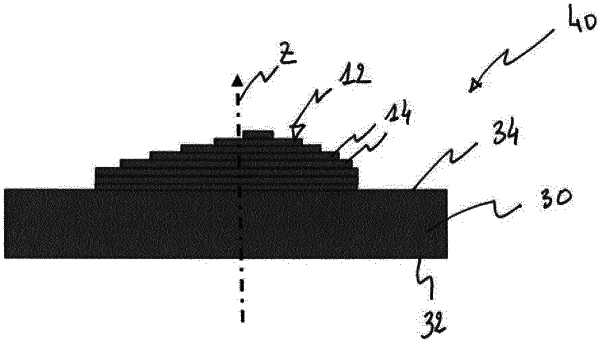| CPC G02C 7/027 (2013.01) [B29D 11/00432 (2013.01); B33Y 80/00 (2014.12); G02C 2202/16 (2013.01)] | 19 Claims |

|
1. A computer-implemented method of determining at least one parameter of an ophthalmic lens to obtain a simulated complementary optical element of said ophthalmic lens, the ophthalmic lens including a starting optical system and a complementary optical element intended to be disposed onto the starting optical system, the complementary optical element being obtained by additive manufacturing and configured to provide at least a part of an optical function of the ophthalmic lens, the computer-implemented determining method comprising:
a step of providing two characterizing surfaces simulating two opposite surfaces of the complementary optical element, a thickness axis of the complementary optical element being defined perpendicular to one of the two characterizing surfaces, a distance between the two characterizing surfaces along said thickness axis defining a thickness of the complementary optical element;
a step of optimizing the distance between the two characterizing surfaces along the thickness axis so that the thickness of the complementary optical element reaches a thickness threshold depending on a thickness of volume elements that form the complementary optical element, to reduce the number and the thickness of the layers forming the complementary optical element while complying with the optical function of the ophthalmic lens; and
a step of determining at least one parameter of the ophthalmic lens based on said optimized distance to obtain a simulated complementary optical element, said at least one parameter being one among a shape, a position, and an orientation of at least one of said two characterizing surfaces at a single point or at multiple points of said two characterizing surfaces.
|